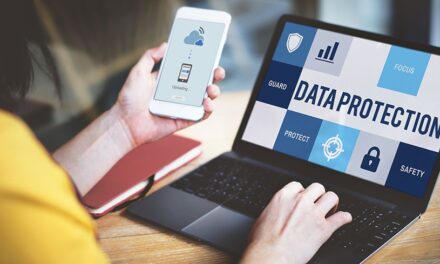Even withall points covered, organizations cannot be cyber complacent: continue to plug all emergent/unique risks, and develop strong threat intelligence!
As the digital landscape continues to harbor sophisticated cyber threats, organizations need to maintain squeaky clean security regimes that minimize security risks like remote-working vulnerabilities, IoT device attacks, AI-powered attacks, and more.
Here are 11 ways our teams recommend to organizations to stay cyber secure with…
-
Embrace the Shared Responsibility Model
The Shared Responsibility Model emphasizes that safeguarding digital assets is a collective effort, not just the duty of IT teams. All employees must be educated about cyber risks to foster a collaborative culture of cyber security awareness and be able to co-create a continuous communication loop to delegate accountability and responsibility.
-
Enforce regular security audits and simulations
Audits are a proactive strategy to reveal gaps and potential weaknesses in your technology infrastructure to optimize security controls. Simulations, like breach-and-attack scenarios, test your defenses in a controlled environment, providing insights into how well your organization can detect and respond to real threats.
-
Implement early detection and incident response
Catching an incident early is the best chance to avoid financial and reputational repercussions. Implement security monitoring tools that identify potential breaches, enabling swift responses to mitigate the impact and minimize the time attackers spend in your system. Additionally, develop a well-defined incident response plan that outlines specific steps for containment, eradication and recovery, as well as post-incident analysis to improve security measures for the future.
-
Mandate employee education and awareness
Security awareness modules, regular training, and social engineering tests can help your workforce make the right decisions on issues like password security and phishing attempts, significantly reducing the risk of breaches caused by human error.
-
Enforce strong password policies
Hackers brought down SolarWinds due to a weak password (“solarwinds123”). The fundamentals of strong password hygiene include:
-
✓ Enforcing complex, hard-to-guess passwords that combine letters, numbers, and special characters
✓ Mandating of regular password changes
✓ Incorporating multi-factor authentication
-
✓ Educating employees on the importance of strong passwords
-
✓ Facilitating the use of password managers and IAM tools
-
-
Mandate regular data backups and software updates
Regular backups ensure that critical data is preserved and can be restored in case of a cyberattack or data loss, with backups ideally stored in multiple locations, including off-site or cloud-based storage. Keeping software up-to-date is equally important, as updates often include patches for security vulnerabilities.
-
Tighten network security and firewalls
Deploy network firewalls to protect your online resources, segment internal networks to isolate malware infections, and control incoming and outgoing network traffic based on predetermined security rules. Network security also involves implementing additional measures like intrusion detection systems and secure Wi-Fi protocols to ensure that only legitimate traffic is allowed. At the same time, malicious or unauthorized access is blocked.
-
Empower staff to exercise online discretion
Cybersecurity is everyone’s priority. Advise employees to exercise discretion about email communications, avoid clicking on suspicious links, and not reveal password hints or personal data that could be used in social engineering attacks. You can promote a vigilant approach to the risks of suspicious emails or links, and the importance of protecting personal and corporate data.
-
Continuously monitor network activities, identities and access privileges
Continuously monitor network access permissions and ensure they align with current roles and responsibilities. Regularly review and update these permissions to prevent unauthorized access to sensitive information and respond to unusual behavior patterns. Effective network management also includes updating security protocols and hardware to respond to new threats.
-
Extend protection to corporate mobile devices
Protection extends beyond corporate laptops. It is essential to update the software of all devices, including corporate mobile phones and tablets that access company networks. Other strategies include using strong encryption for data, implementing secure access controls, and installing reputable security applications.
-
Utilize VPNs for secure connections
Encourage the use of Virtual Private Networks for secure connections, especially when employees work remotely. Remind employees regularly about safe usage practices, such as avoiding unsecured Wi-Fi networks and being cautious with app downloads.
No matter how basic or complex, these 11 fundamentals of cybersecurity hygiene will equip your teams with the knowledge to maintain a secure digital space.

















